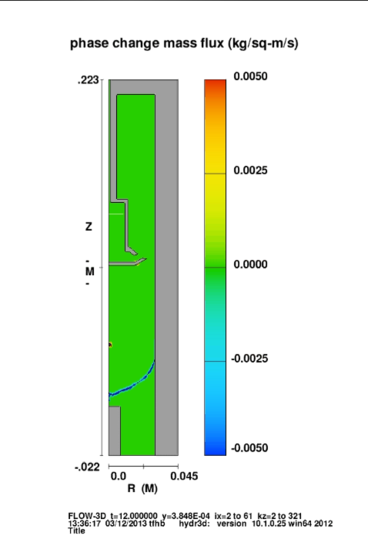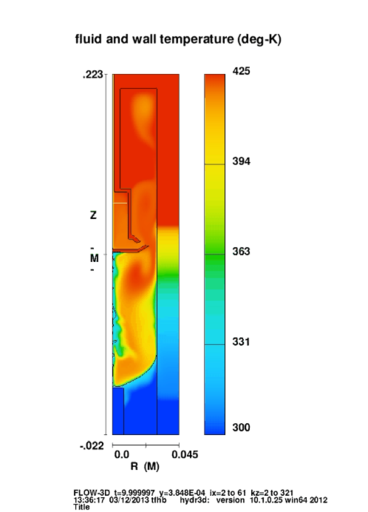Computation of free surface flow problems
Free surfaces have a major impact of spacecraft design. The liquid motion (what is called sloshing) in tanks influences the dynamic of launchers and satellites. The heat and mass transfer across the interface is from great importance since it influences the pressure inside the tanks which can affect the structure. Especially for cryogenic liquids the mass loss of fluid through pressure regulation is a critical factor.
The coasting phase of partly filled tanks in space applications exceeds the drop tower and sounding rocket microgravity time in orders of magnitude. Also the experimental space is limited that only models of real size containers can be tested in the drop tower. Another problem is to gain sufficient data from these experiments since access to sensible areas is limited or temperature regimes (cryogenics) make it difficult to probe. CFD simulations are a common used tool in the design phase of experiments. Furthermore experimental data is used to create benchmark tests for code validation. At ZARM commercial and research codes are used to compute free surface flow problems.
Fields of current research are:
- Behavior and shape of the free surface
- Bubble growth
- Boiling & condensation
- Correlations between heat, mas transfer and contact angle




 "
"